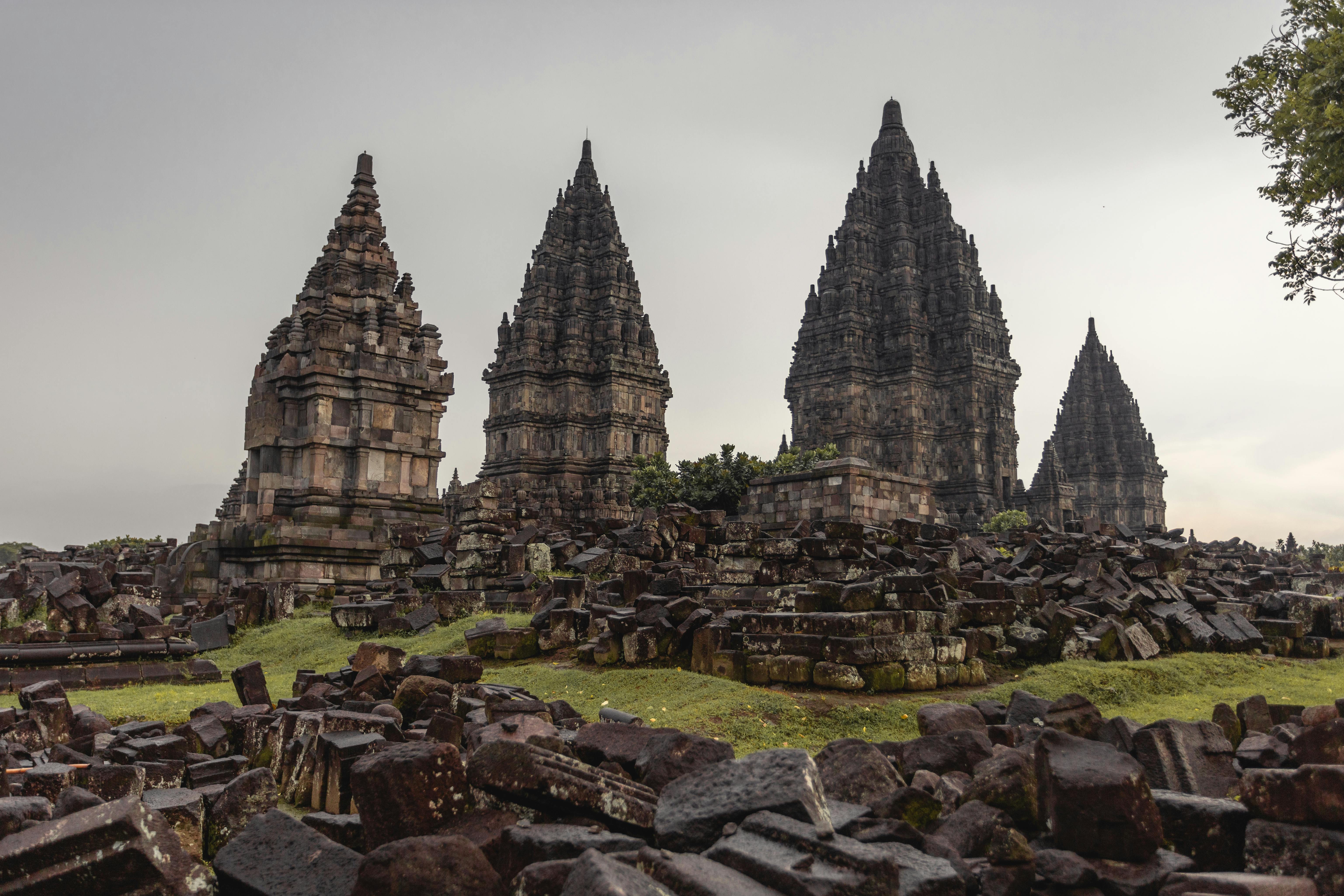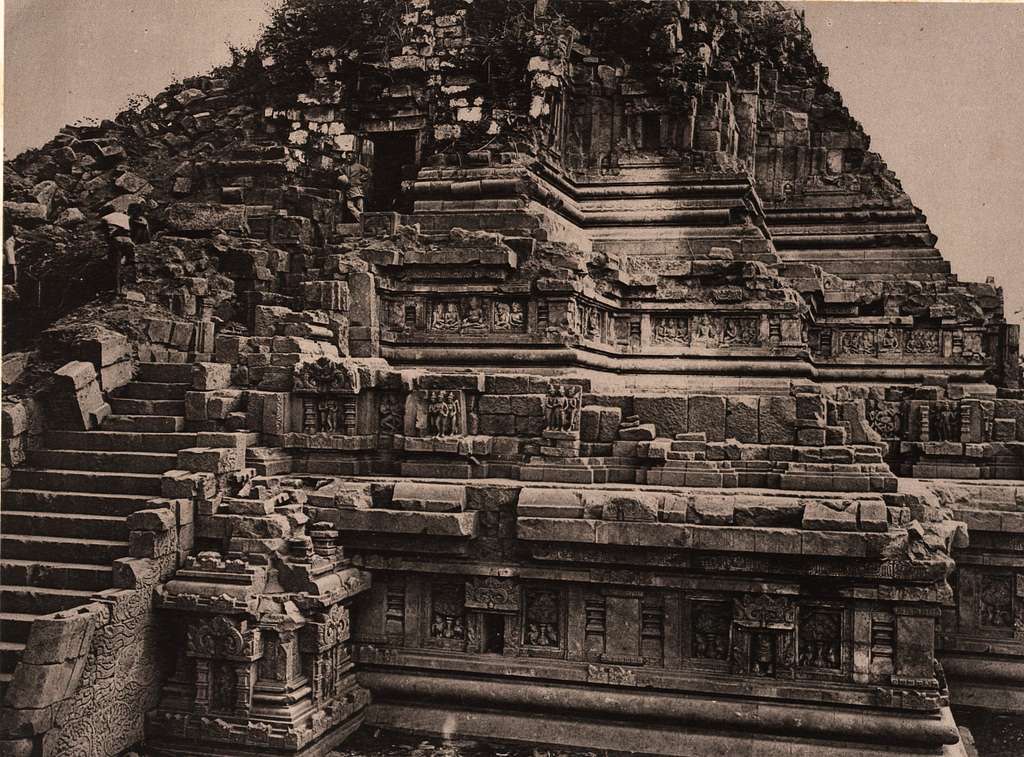Prambanan Temple Compounds is the largest Hindu temple in Indonesia and the largest temple dedicated to Shiva in Indonesia. It is considered one of the largest Hindu monuments in the world and a symbol of architectural and cultural arts from the past.
The complex is located on Java Island, on the border between the Yogyakarta and Central Java provinces. The Hindu shrines within the Prambanan Temple compounds are decorated with reliefs depicting the Indonesian version of the Ramayana. Three large temples rising from the central square are decorated with reliefs depicting the Ramayana and are dedicated to the three great Hindu deities: Shiva, Vishnu, and Brahma. The Prambanan Temple Compounds is a UNESCO World Heritage Site.
History and Construction
Historians base the temple's history on the contents of the Syiwagrha Inscription, found in the vicinity of Prambanan and currently housed in the Jakarta National Museum. This inscription, dated 856 AD (778 Saka), indicates that the temple was inscribed during the Rakai Pikatan period. The Prambanan Temple (Loro Jonggrang) is a 9th-century Hindu temple built during the Sanjaya dynasty. In contrast, the Sewu, Lumbung, Bubrah, and Asu (Gana) Temples are Buddhist temples built during the Sailendra dynasty in the 8th century. The temples collapsed due to earthquakes, volcanic eruptions, and political changes in the early 11th century and were rediscovered in the 17th century.

Prambanan Temple (Pexels)
Structure and Architecture of the Temple Compounds
Prambanan Temple Compounds consists of Prambanan Temple (also known as Loro Jonggrang), Sewu Temple, Bubrah Temple, and Lumbung Temple. All of these temples constitute the Prambanan Archaeological Park. Prambanan Temple itself is a large compounds encompassing 240 temples.
Based on its original rectangular plan, the compounds was organized into an outer courtyard (Jaba) and three inner courtyards: the outer courtyard (Jaba), the central courtyard (Tengahan), and the inner courtyard (Njeron). The outer courtyard (Jaba), a rectangular open space enclosed by stone fences, covers an area of 390 square meters and is now vacant and ruined.
The Central Courtyard (Tengahan) is a second rectangular courtyard, measuring 222 square meters, located at the center of the outer courtyard. These terraces housed hundreds of smaller temples of similar shape and size, each with a base of 6 square meters and a height of 14 meters. Based on this, 68 small temples were located on the first (the lowest) terrace, 60 on the second terrace, 52 on the third terrace, and 44 on the fourth (the highest) terrace; however, almost all of these temples are in ruins today.
The Inner Courtyard (Njeron) is considered a sacred and elevated space; it has a rectangular plan of 110 square meters and is approximately 1.5 meters higher than the uppermost terrace of the central courtyard. The inner courtyard has two rows of temples running north-south. The Western Row contains three temples facing east: the temples of Vishnu (the northernmost), Shiva (the center), and Brahma (the south). The Eastern Row houses three temples facing west, called "wahana temples" (wahana: vehicle) because they are named after the deity's mount. The Vishnu, Brahma, Swan, Garuda, and Nandi temples are of the same shape and size, with a base of 15 square meters and a height of 25 meters. There are also smaller Apit Temples located opposite each other at the north and south ends of each corridor.

Prambanan Temple Architecture 1889-1890 (Picryl)
The Ramayana Epic
A brief summary of the Ramayana epic depicted in the reliefs in temples is as follows:
Prabu Janaka, King of the Mantili Kingdom, organizes a competition to find a husband for his daughter, Dewi Shinta. Raden Rama Wijaya, Prince of the Ayodya Kingdom, wins the competition. Prabu Rahwana, leader of the Alengka Kingdom, is also on the scene. While Rama and Shinta walk through the Dandaka forest, accompanied by Lakshmana, Rahwana secretly spies Shinta. Rahwana orders one of his followers to become Kijang Kencana (Golden Deer) to attract Shinta's attention. Interested in the deer, Shinta asks Rama to capture it. Rama draws a magic circle around himself to protect Lakshmana and Shinta and leaves. When Rama doesn't return, Shinta, worried about him, sends Lakshmana to search for him. Rahwana, transforming into an old beggar, persuades Shinta to leave the circle and kidnaps him, taking him to Alengka. On his way to Alengka, Rahwana encounters Jatayu, a bird who tries to save Shinta, but Jatayu is defeated.
Realizing Shinta is missing, Rama encounters the wounded Jatayu and learns the truth. Later, Hanuman , a white monkey , arrives, helping Rama find Shinta. Rama and his monkey army build a bridge across Alengka. The Great Battle takes place between the giant Alengka army and Rama's monkey army. In this battle, Indrajid and Kumbakarna are killed. Ravana is killed by Rama's arrow and Mount Sumawana, thrown by Hanuman. After Ravana's defeat, Shinta meets Rama again. Rama, suspicious of Shinta's purity, rejects him. To prove his purity, Shinta immolates himself, but with the help of the fire god, he survives the burns. With this proof, Rama accepts Shinta back.

North Side of Prambanan Temple 1889-1890 (Picryl)
UNESCO World Heritage and Conservation
Prambanan Temple Compounds was inscribed on the UNESCO World Heritage List in 1991 based on two main criteria. One criterion states that the compounds exhibits Shiva artistic culture, which is considered as a masterpiece of the classical period in Indonesia and the region. The other criterion states that the property is designated as a religious compounds characteristic of the 10th-century Shiva expression.
Protection and Management
The coherence and originality of the complex have been carefully preserved. The 508 stone temples are either completed and preserved or preserved as ruins. The property was designated a National Cultural Property in 1998 and is further protected by national legislation enacted in 2010. A 1992 Presidential Decree established the 77 hectares encompassing the property under central government ownership. Restoration work has been underway since 1918, employing both the original traditional method of interlocking stones and modern methods of reinforcing the temple structure with concrete.
The 2006 Earthquake and Its Consequences
On May 27, 2006, an earthquake measuring 5.9 on the Richter Scale that affected Yogyakarta and parts of Central Java caused damage to the Prambanan Temple Compounds. The damage included widening and outward deformation of vertical joints, cracks in some stones, and the collapse of some ratnas (small stupas) and parapets. Sewu Temple was particularly affected, with noticeable outward deformation and wide cracks at its four corners. Sojiwan Temple, which was undergoing restoration at the time of the earthquake, was also damaged.
An expert panel examined past structural interventions at temples, including those built around reinforced concrete frames, from the 1950s onward. They determined that the differing elastic moduli of the reinforced concrete frame and drywall, which behave very differently under horizontal thrust, were a major cause of the damage. The assessment revealed that reinforced concrete frames are not only unusable but also potentially detrimental under seismic influence. In response to this damage, Indonesian authorities requested urgent assistance of US$75,000 to mitigate the risks, which was approved in June 2006. The UNESCO World Heritage Committee, at its 30th session in 2006, encouraged the implementation of urgent risk reduction measures and further analysis to determine a long-term conservation strategy. The Shiva temple has not yet been rehabilitated, and technical studies were conducted in 2010 and 2011.
Location and Transportation
Cities close to the Prambanan Temple Compounds are Yogyakarta (17 km southwest) and Klaten (3 km north). The temple is easily accessible as it is located on the Solo-Yogya highway. From Yogyakarta, public transportation is available via Transjogja. Intercity buses to Solo also run to the temple.


